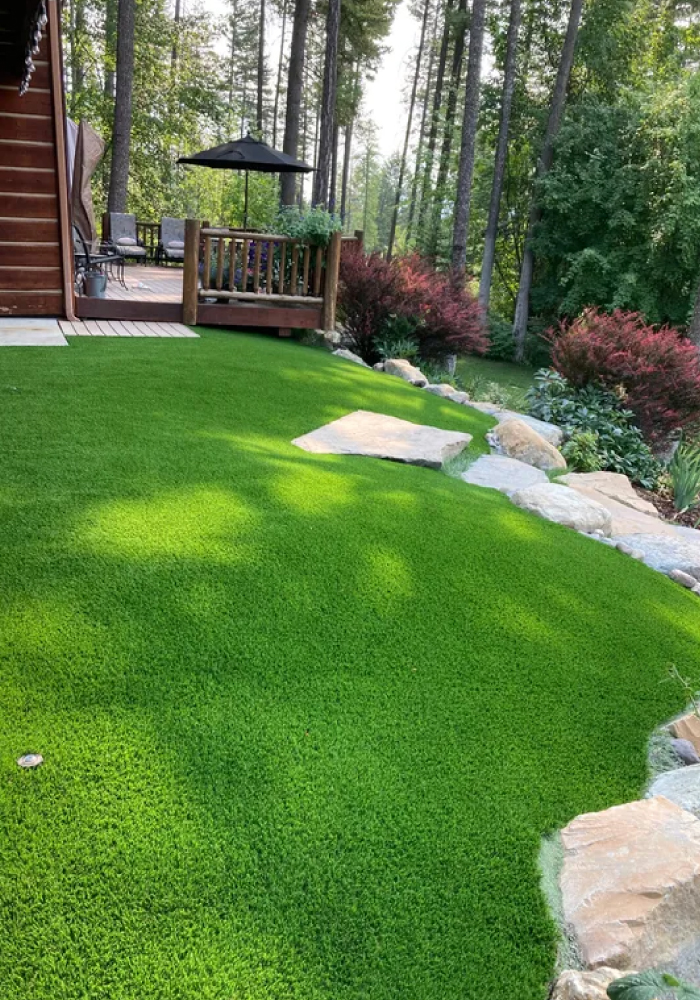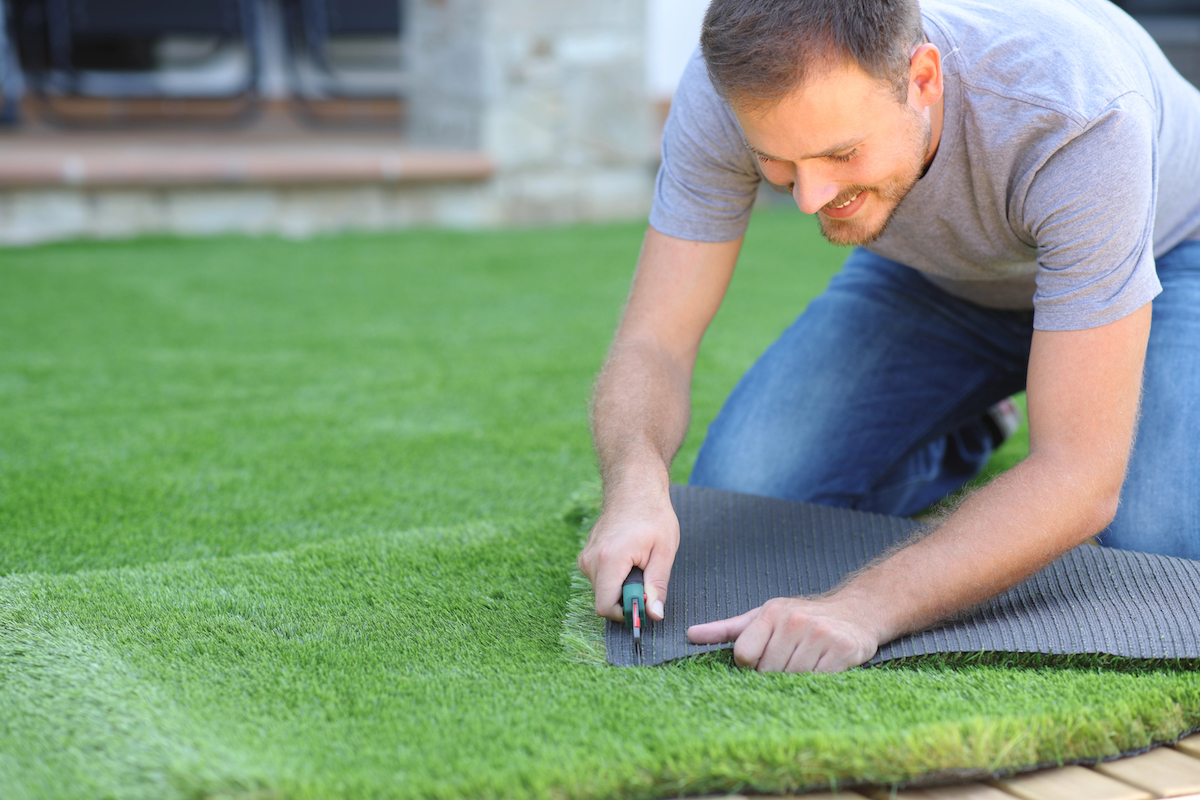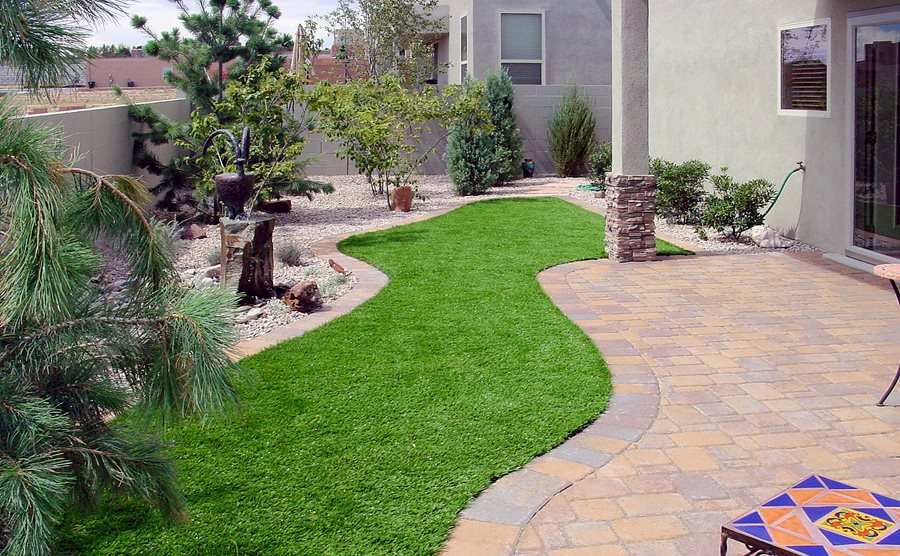Delve Into the Environmental Benefits of Opting for Synthetic Grass Solutions
The adoption of man-made turf solutions offers a compelling chance to attend to pushing environmental obstacles. By substantially lowering water use and minimizing the application of harmful chemicals, these options not just advertise lasting landscape design but likewise secure regional ecological communities.
Water Preservation Advantages
One of the most significant advantages of synthetic turf is its capacity to save water. In contrast, man-made grass does not need watering, dramatically minimizing the general demand for water sources.
By getting rid of the need for normal watering, synthetic grass adds to lasting landscape practices and assists mitigate the environmental impact of too much water consumption. The conservation of water extends to the reduction of overflow, which can lead to soil disintegration and waterway pollution.
Furthermore, the installment of synthetic turf permits towns and homeowners to allot water resources a lot more successfully, concentrating on necessary uses such as drinking water and agriculture. The change in the direction of synthetic lawn not only promotes responsible water use but additionally lines up with more comprehensive environmental goals targeted at maintaining natural deposits.
As areas increasingly prioritize sustainability, the water preservation benefits of man-made lawn offer an engaging case for its fostering in property and business landscape design projects.
Lowered Chemical Usage
The transition to synthetic grass dramatically reduces the reliance on chemical therapies commonly made use of in natural grass maintenance. Conventional grass administration typically entails the application of herbicides, fertilizers, and chemicals to promote growth and control bugs. These chemicals can present dangers to human health, regional wild animals, and the atmosphere, adding to dirt and water contamination.
In contrast, artificial grass gets rid of the need for these unsafe compounds. By minimizing the launch of artificial substances into the community, man-made turf promotes healthier soil and water systems.
Additionally, the absence of chemical drainage connected with synthetic grass installations aids secure regional rivers from air pollution, sustaining water life and maintaining biodiversity. Artificial turf companies phoenix. As areas progressively focus on sustainable practices, going with synthetic grass provides a sensible service that straightens with ecological preservation objectives. Through this shift, residential or commercial property proprietors can take pleasure in lavish green areas without jeopardizing eco-friendly health and wellness, leading the means for an extra sustainable future
Lower Carbon Impact

Moreover, the installation of synthetic grass can cause considerable water conservation. click resources Natural yards call for significant quantities of water for irrigation, which not only contributes to the carbon footprint connected with water extraction and therapy however additionally stress regional water resources. On the other hand, synthetic grass needs very little upkeep, calling for no watering, consequently considerably lowering water usage and its associated energy prices.
In addition, the longevity of synthetic grass adds to its decreased carbon impact. With a life expectancy of as much as 15 years or even more, the requirement for frequent replacements is lessened, resulting in less waste and reduced power intake in manufacturing and disposing of traditional lawn alternatives. Generally, man-made lawn provides a sustainable option for environmentally conscious landscape design.
Habitat Conservation
Habitat conservation is an essential factor to consider in the discussion over landscape design selections, particularly when contrasting synthetic grass to natural lawn. Natural turf yards often call for considerable upkeep, consisting of making use of pesticides, plant foods, and herbicides, which can adversely impact local communities. These chemicals can seep right into the dirt and waterways, damaging native flora and fauna and interfering with neighborhood environments.
On the other hand, man-made turf provides an opportunity to decrease the ecological footprint of landscape design. By going with artificial lawn, home owners can minimize the disruption of natural environments related to traditional grass treatment practices. Synthetic grass gets rid of the need for harmful chemicals, consequently protecting nearby wildlife and maintaining the honesty of surrounding ecosystems. The installment of man-made grass can lead to the conversion of former lawn see this areas right into more biodiverse landscapes, such as pollinator gardens or indigenous plant areas, which can support neighborhood wild animals.
Inevitably, the shift to fabricated grass not only conserves water and decreases maintenance efforts but additionally cultivates a more harmonious connection between human activities and the natural surroundings, advertising environment conservation in the process.
Long-Term Sustainability
Lasting sustainability is a vital aspect in examining the advantages of synthetic grass over conventional grass lawns. One of one of the most significant benefits of artificial grass is its durability; it can last approximately 15-20 years with minimal upkeep, whereas all-natural yard needs constant reseeding and replacement. This long life lowers the need for continuous sources, such as water, fertilizers, and pesticides, which are vital for maintaining a healthy yard yard.
In addition, artificial grass adds to a decrease in carbon discharges linked with grass care tools. Standard yards often call for gas-powered lawn mowers, leaners, and blowers, all of which add to air pollution. Arizona artificial turf. In contrast, synthetic grass removes the need for such tools, promoting a cleaner environment
In addition, the production of man-made grass significantly uses recycled products, boosting its sustainability profile. As makers adopt environmentally friendly methods, the environmental footprint of synthetic grass proceeds to diminish.

Conclusion
The adoption of man-made turf options presents considerable environmental advantages, including substantial water conservation, lowered reliance on unsafe chemicals, and a lower carbon footprint. my review here Additionally, synthetic grass aids in preserving natural habitats by decreasing land disturbance and advertising long-lasting sustainability via the use of sturdy materials. Collectively, these elements emphasize the potential of fabricated lawn to contribute favorably to environmental health and wellness and offer a sensible alternative to standard landscaping techniques in a significantly resource-conscious globe.
In contrast, synthetic turf does not need watering, substantially reducing the total need for water resources. By lessening the release of synthetic compounds into the ecosystem, artificial lawn promotes much healthier soil and water systems.
Furthermore, the installment of synthetic grass can result in considerable water preservation. In comparison, man-made grass needs very little maintenance, requiring no watering, thus substantially lowering water usage and its linked energy expenses.
